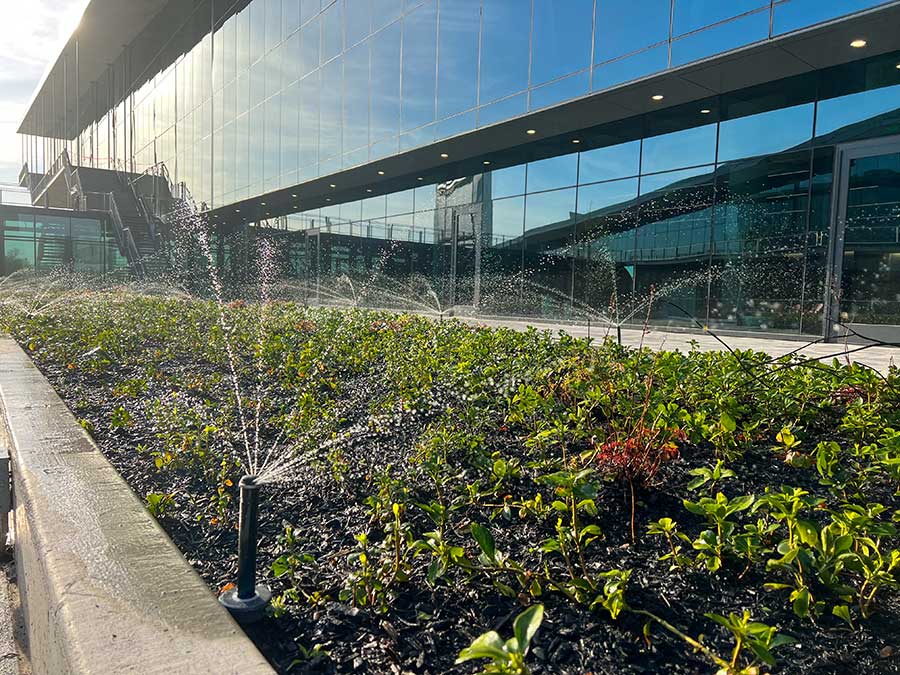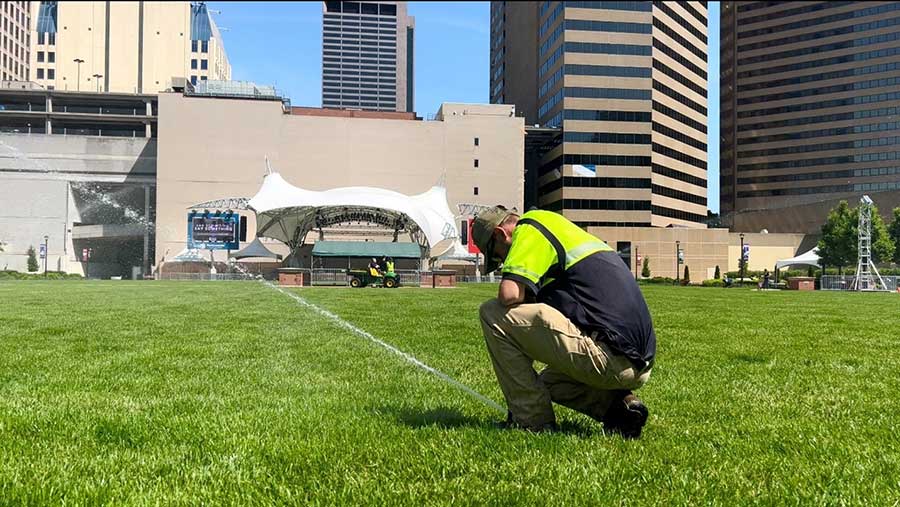Did you know that Ohio is a water rich state having the Great Lakes to the North, Ohio River to the South, and many lakes & streams in between. In a water rich region however, do smart controllers really help or are they a waste of money? At EMI, we believe we are helping manage a public utility (water) every bit as managing as our Columbus landscape client’s irrigation systems. It is our philosophy that we are stewards of our communities through this approach.
Over the past several years, Columbus and its surrounding areas have had major construction with rise of new apartments, neighborhoods, and large buildings. Systems that ran fine from the domestic water source 5 years ago, may need a booster pump today due to the lower pressure of having additional demands.
Through smart controllers, we are confident we save our clients at least 25-35% on the total volume of water used to irrigate their landscaped properties in Columbus. If, as an industry, we were able to do this on all irrigation systems, we feel that we will help slow the need of major infrastructure upgrades and reduce our customers cost.
Smart controllers are able to achieve these reductions through the use of technology such as communications, weather stations, flow/hydro-meters, soil moisture sensors, and so on. If set up and utilized correctly, these devices work in tandem to detect issues as soon as they happen, well before the landscape knows.
We work with many of our clients on multi step programs to get their sites on these systems starting with the controller and weather station. Items such as electrical issues are communicated as they are detected. These do have the capability of self-adjusting their run times each day based on the weather and specified evapotranspiration (ET) rates. The controllers need to be programmed with specific soil types, plant types, sprinkler head types, and locations. Once that information is loaded, the controller talks to the weatherstation to read the weather… If it is a humid day, a zone would run less than on a non humid day. Standard controllers run solely based on the minutes programed in.
After the controller and weather station are established, we work with clients to add items such as flow sensors or hydrometers. Through the use of flow sensing, we will know if a zone has high or low flow or if there is a mainline leak. If detected, the controller would communicate directly to our Water Management team and customers and shut that zone or system off as not to waste water. The other benefit of flow sensing is it’s instrumental in shortening the time it takes to water an entire system without having too large of flow rates.
Lastly, on very large sites where it may rain on one side of the property and not the other, we use soil moisture sensors (SMS). The total number of SMS’s needed are site specific, but we usually put 4-6 of them per controller. These will read the soil moisture content and temperature of the soil to gage how much water that zone may need.
In our eyes, true Water Managers are not concerned with “making plants wet”. Our main goal is to maintain a proper soil moisture content that helps the plant material strive. Through using these tools, we are reducing the total volume of water used, trying to slow the need of major city infrastructure upgrades, and providing a better environment for our plants to live.











